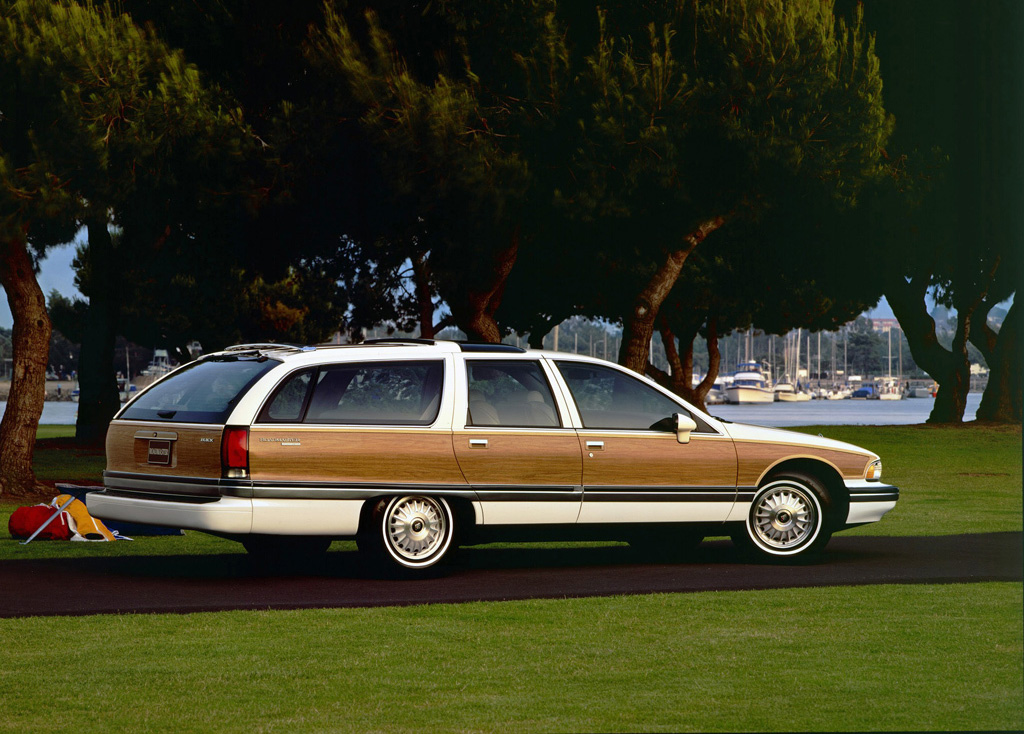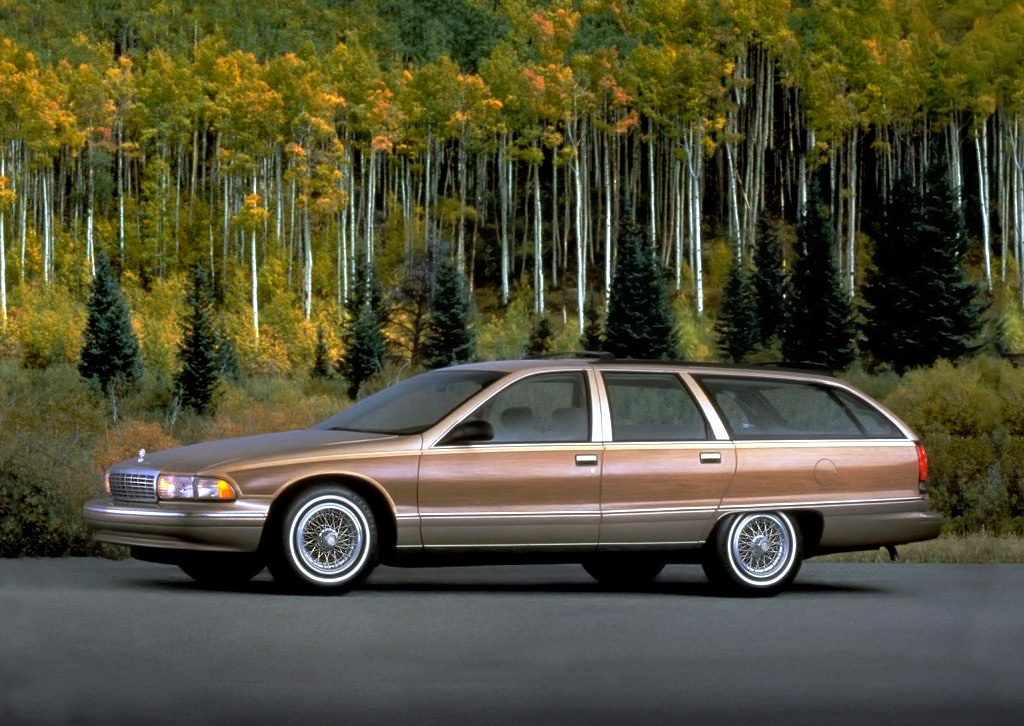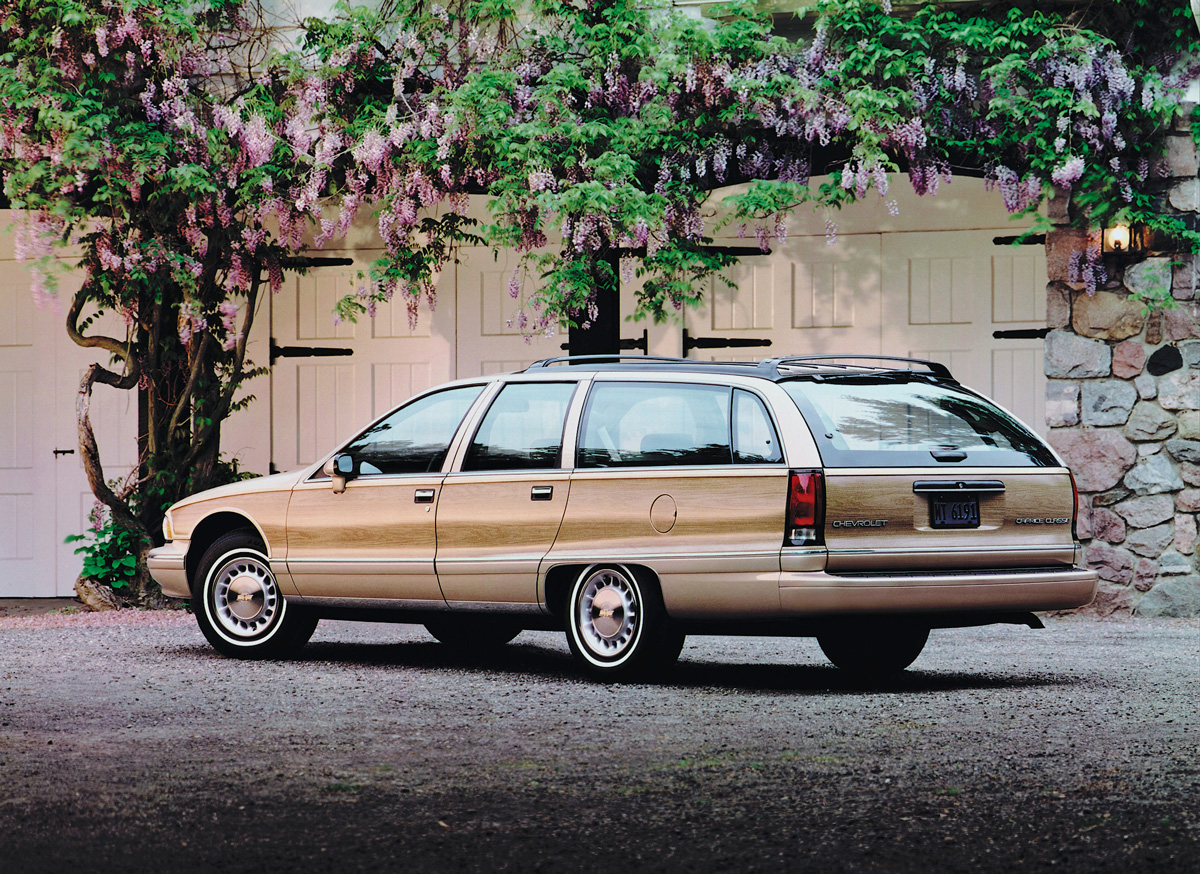Late-stage leviathans: The American station wagon’s last stand
For generations of Americans, summer driving vacations took place in full-size, V-8-powered, rear-wheel-drive station wagons. As this year’s road-trip season gets into full swing, maybe you’re thinking of skipping the modern SUV/crossover or minivan and instead rolling old-school.
If so, the General Motors trio of the Chevrolet Caprice, Oldsmobile Custom Cruiser, and Buick Roadmaster that was introduced for 1991 are the very last of their ilk.
At the dawn of the 1990s, General Motors’ big, square-bodied station wagons had been in production largely unchanged for a decade, and the same was true at Ford. But whereas Ford dropped its Country Squire and Mercury Colony Park after 1991 (and Chrysler had ditched its big wagon offerings years before), GM gave it one more go with a redesign for the ’91 model year.
After years of T-square styling that dated back to 1977, the design pendulum swung far in the other direction for GM’s new Chevrolet, Oldsmobile, and Buick wagons. The resulting bulbous, rounded shape supposedly was dictated by aerodynamics and was accentuated with large glass areas.

The rear window was too raked to retract into the tailgate, so instead it was hinged at the top, while the tailgate offered the traditional two-way side- or bottom-hinged opening functions. A fixed glass panel above the second-row seats was a throwback to the ’65–’72 Oldsmobile Vista Cruiser/Buick Sport Wagon, and a rear-facing third-row seat was standard. Faux-woodgrain sides were standard on the Buick, not available on the Oldsmobile, and (from ’93 on) a $595 standalone option on the Chevrolet.
The trio of wagons arrived in the fall of 1990 as ’91 models, with the Chevrolet preceded by a Caprice sedan that debuted earlier in 1990. The sedan version of the Buick trailed the wagon by a few months, appearing in the spring of ’91 as a ’92 model. At Oldsmobile, the Custom Cruiser had no RWD sedan counterpart, as the Eighty-Eight and Ninety-Eight already had switched to front-drive platforms.
Chevrolet’s Caprice and Oldsmobile’s Custom Cruiser nameplates were a continuation of those used on the preceding square-bodied offerings, but Buick ditched the previous Estate Wagon moniker and resurrected the Roadmaster nameplate (last used in 1958) for its big wagon and sedan.
All three divisions used a 170-hp 5.0-liter V-8 paired with a four-speed automatic, and a driver’s-side airbag and antilock brakes were standard. The wagons rode on a 115.9-inch wheelbase and stretched some 218 inches from stem to stern. The suspension consisted of control arms, coil springs, and an anti-roll bar up front, with a live axle and coil springs at the rear. An optional trailering package included a heavy-duty radiator, engine-oil cooler, load-leveling rear suspension, and 3.23:1 rear axle ratio, allowing the big wagons to tow 5000 pounds.

For 1992, a 180-horse, 5.7-liter V-8 joined the options list at Chevrolet and Oldsmobile while Buick made it standard. Oldsmobile bowed out of the big-wagon game the following year, while the Caprice earned Classic status for ‘93.
Come 1994, Chevrolet rolled out a new 200-hp 4.3-liter base V-8, but the big news was the arrival of the 5.7-liter LT1—a detuned variant of the engine that powered the Corvette—with 260 horsepower and 335 lb-ft of torque. It was optional on the Caprice and became standard on the Roadmaster.
For 1995, a second trim level appeared for the Roadmaster, the Limited, which brought automatic climate control, automatic door locks, a power antenna, keyless entry, and dual power seats with power lumbar and optional seat heaters. 1996 was the final model year for both wagons, and the Roadmaster wore a special Collector’s Edition hood ornament to commemorate the occasion. The Arlington, Texas, factory that produced these RWD full-size sedans and wagons (including the Cadillac Fleetwood) switched over to truck production.
In total, 52,241 Caprice wagons were built over six years, with the numbers declining precipitously over that period, from 15,000 for ’91 to just 485 ’96 models. Roadmaster wagons were right behind with 50,426 built during the same period, although demand at Buick was somewhat more consistent. Oldsmobile’s two-year run produced just 12,010 Custom Cruisers, making that by far the rarest variant.

Interest in Buick Roadmaster wagons has seen a major uptick of late, and while these cars were a favorite of the geriatric set when new, today’s buyers are often younger Gen Xers. The Roadmaster wagon even made the Hagerty Bull Market List for 2019. Buyers today much prefer the LT1 engine, which is found in all of the later-series Buicks and some of the later-series Chevys. The Oldsmobiles and some of the Chevrolets have cleaner, non-woodgrain flanks, although replacement kits are now available to redo fake timber that has faded.
These wagons are tunable, including with parts made for the contemporary ’94–’96 Impala SS, so the original dynamics can be improved. Generally, these bloated cruisers are mechanically simple, robust, and long-lived. Truly, these last of the old-style station wagons are a great way to experience road-tripping, old-school style.




